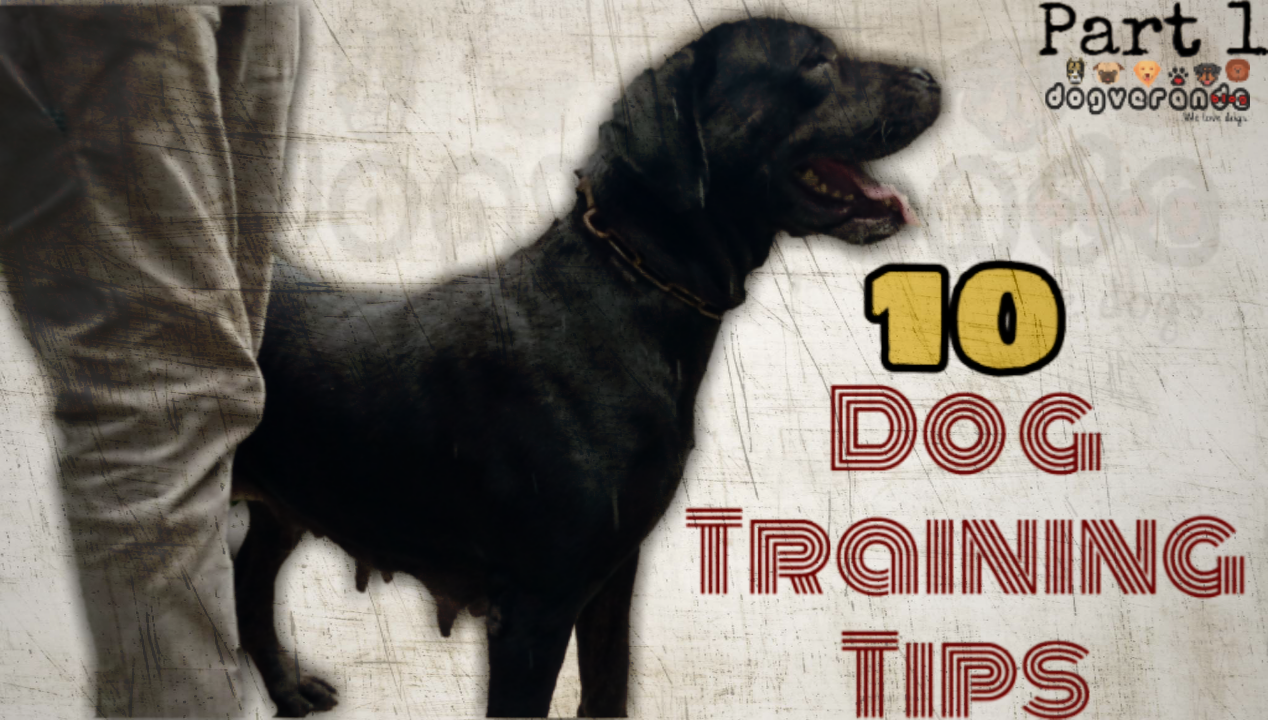Here are 10 dog training tips every dog owner ought to know.
1. EARLIER TRAINING.
Immediately you get a dog, you should begin training in some capacity. It may take some time to catch up if you should start training late. The key to remember is that training is often nothing more than reversing bad habits and behaviors. If you have a young dog, they haven’t had a chance to develop a significant number of these bad behaviors then training will be much easier. If you have an older dog, you really have to unteach, everything the dog knows about behavior and start to reteach behaviors that you want.
2. FOCUS ON WHAT YOUR DOG IS DOING RIGHT.
Professional dog trainers advice their students to reward their dogs when they do something right. This “positive training” method is in contrast to training that centers on punishment. Dog owners should praise and reward their dogs with treats, new toys or affection for good behavior instead of just scolding them for bad behavior.
3. BE PROACTIVE, KEEP YOUR DOG FROM
BEHAVING BADLY IN THE FIRST PLACE.
One of the most important tips that a professional dog trainer will tell his or her students is that good behavior is not just the responsibility of the dog. The owner must make every effort to avoid giving the dog the ability to engage in bad behavior while they are still learning the ropes. For example, if you notice that your dog likes to chew, it’s important to make sure that everyone in the home puts their shoes behind closed closet doors to remove temptation.
4. STOP SAYING NO!
One of the biggest mistakes that people make when training their dogs is saying NO without giving the dog an explanation of some type. Dogs, much like children, will become confused with a simple command of NO! Here’s what you should do instead. If your dog is stealing the cat’s food, tell him NO and then gently guide him to his own food dish. Or, if your dog is chewing on a table leg tell him NO and give him rawhide or another toy on which he can chew. Once your dog begins to actually use the new behavior, reward him with treats, toys and praise.
5. BE KIND AND GENTLE FOR BEST RESULTS.
If you're a dog owner who constantly punishes his or her dog for bad behaviors is bound to be a lot less successful than an owner who is gentle and kind, rewarding his or her dog for acceptable behaviors. Consider offering your dog plenty of praise, and be gentle when redirecting his attention from a bad behavior to one that is more acceptable to you.
6. USE THE ONE COMMAND RULE.
Only give your dog each command at a time. If you want your dog to come, tell him COME! if you want him to sit, just say SIT! If your dog decides to ignore the command the first time, gently place him into the sit position and then praise him or give him a treat. Do this with every command, so that your dog doesn’t think that your commands are optional. Stick to the one command rule, and your dog will quickly learn to take your commands seriously.
7. ALWAYS ENFORCE YOUR COMMANDS.
If you give commands, but do not enforce them, your dog will learn that there is no reason to listen to you. On the other hand, if you back up your commands with reinforcement he will quickly learn that you mean business. For example, if you tell your dog to sit and he ignores you, gently push him into the desired position and praise him. Always praise good behavior as a means of enforcing your commands.
8. CLEARLY DEFINE YOUR COMMANDS.
If you expect your dog to follow commands, then it is imperative that he understands what it is that you want him to do. For example, if you are trying to teach him to sit you will only confuse him if one time you use the command SIT and the next time SIT DOWN. If he’s confused he’ll most likely just ignore you. And this can lead to a vicious cycle. So, pay attention to the commands you are teaching and don’t confuse your dog by being inconsistent.
9. TEACH YOUR DOG TO READ YOUR TONE. Tone is just as important as the actual command that you are giving. Therefore, try to always use a consistent tone when issuing a command. Yelling a command will be less effective than just using a firm and authoritative tone. Pick a tone, and stick with it. Your dog will begin to recognize that tone, and respond to what you are telling him more effectively.
10. ANALYZE STUBBORNNESS.
If you find that your dog is stubborn and does not want to listen to your commands, there may be a simple explanation. Look for signs to see whether you are giving commands that your dog understands, whether your dog knows what to do when they hear a certain command and whether the command is creating an uncomfortable feeling in your dog. Most likely, you need to simply repeat training for a specific command and make your dog feel more comfortable through rewards and praise.
Stay connected, on our next Dog training tips article...



Post a Comment